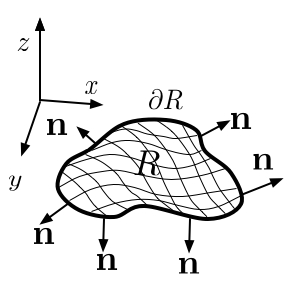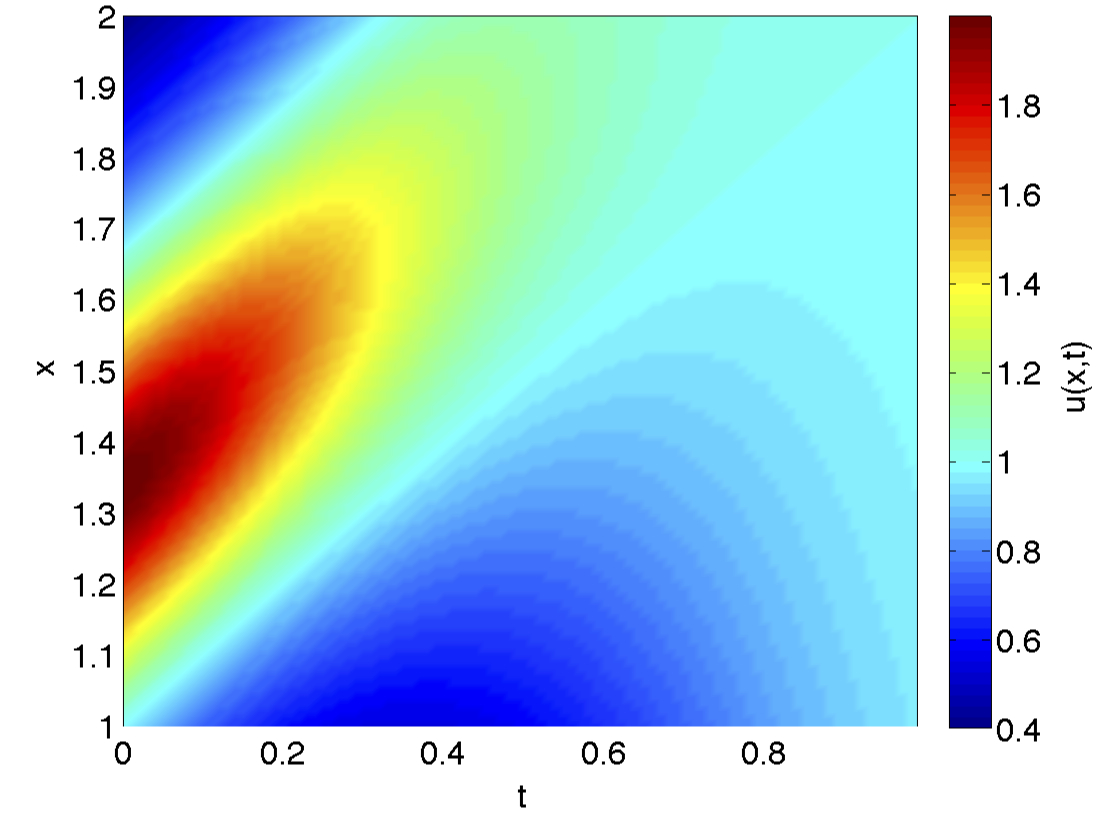
|
Vector Calculus and Partial Differential Equations 3140 |

|
The calculus is a set of tools to analyze the relationships and functions essential for modeling physical processes important in science and engineering applications.
3140 Entrance requirements and prerequisites
- "C" or better in either Math 2250 or 2280 AND any of the following
- "C" or better in Math 1320
- "C" or better in Math 2210
- "C" or better in Math 1321
- "C" or better in Math 1280
- Departmental consent
Learning Objectives of 3140
The goal of Math 3140 is to master the basic tools of calculus in 2 and 3 dimensions and the modeling and solutions techniques of partial differential equations pertaining to heat transfer, diffusion, electrostatic potentials, and mechanical and electromagnetic vibrations and waves.
The tools and skills
- Students will be introduced to the tools of integration of multivariate functions over areas and volumes and will learn the use of iterated multiple integration. Similar to single-variable integration, students will learn the technique of multidimensional change-of-variables to transform the coordinates over which integration proceeds by utilizing the Jacobian. Specifically, students will learn how to transform between an integral over an area or volume in Cartesian coordinates to polar or spherical coordinates, respectively.
- Students will become familiar with vector functions that define vector fields in the plane and 3D space, particularly conservative vector fields, represented by the gradient of a scalar function, which are important for gravitation and electrostatics. When masses or charged particles are pushed through fields such as these along curved paths, the work done can be computed as a line integral. Students will learn how the fundamental theorem for line integrals for conservative vector fields reduces the integral to valuation of the potential at the endpoints of the path.
- Students will learn the fundamental vector calculus integral theorems of Green, Stokes', and Divergence. The notion that one-dimensional integrals of functions can be computed from evaluation of a related function (e.g., an antiderivative or a potential function) on the end-points of the interval of integration generalizes to integration over areas, surfaces and 3D domains. Integration over these domains can be computed by evaluation on the boundary of an area, surface, or volume of the appropriate function. Students will learn meaning and computation of the curl and divergence of a vector field and utilize them to compute area and volume integrals using Green's and Stokes', and the Divergence theorems, respectively. Students will also learn how these theorems represent conservation principles for physical vector fields important in gravitation and electric fields.
- Students will become knowledgable about partial differential equations (PDEs) and how they can serve as models for physical processes such as mechanical vibrations, transport phenomena including diffusion, heat transfer, and electrostatics. Students will be able to derive heat and wave equations in 2D and 3D using the divergence theorem.
- Students will master how solutions of PDEs is determined by conditions at the boundary of the spatial domain and initial conditions at time zero.
- Students will be able to understand and use inner product spaces and the property of orthogonality of functions to determine Fourier coefficients, and solution of PDEs using separation of variables. Students will master the method of separation of variables to solve the heat and wave equation under a variety of boundary conditions. Students will be familiar with the use of Fourier series for representation of functions, and the conditions for series convergence.
- Students will be able to solve for the electric potential in an area or volume region by specifying the charge distribution on the boundary of the region (i.e., boundary conditions) and use separation of variables to obtain the solution. Students will be able to derive basic properties of these electric potentials, including points of minimum/maximum potentials, and use Stokes' theorem to determine work done moving charges in a closed path through the potential.
- Students will also master the use of the Fourier transform and integral convolution to solve the heat equation on the real line using the heat kernel.
Problem solving fluency
- Students will be able to read and understand problem descriptions, then be able to formulate equations modeling the problem usually by applying geometric or physical principles. Solving a problem often requires a series of transformations that include utilizing the methods of calculus. Students will be able to select the appropriate calculus operations to apply to a given problem, execute them accurately, and interpret the results using numerical and graphical computational aids.
- Students will gain experience with problem solving in groups. Students should be able to effectively transform problem objectives into appropriate problem solving methods through collaborative discussion. Students will also learn how to articulate questions effectively with both the instructor and TA, and be able to effectively articulate how problem solutions meet the problem objectives.
Week-by-week guide of topics and textbook sections
- Week 1: 12.1-4: Review of dot, cross products, gradient vector; Double integrals, Iterated integrals, Integration over general regions, Integrals in polar coordinates
- Week 2: 12.5-7: Applications, Surface area, Triple integrals
- Week 3: 12.8-9: Cylindrical/spherical coordinate integrals, Change of variables, Jacobians; Super quiz
- Week 4: 13.1-3: Vector fields, Line integrals, Fundamental theorem of line integrals
- Week 5: 13.4-5: Green's theorem, Curl and divergence; Midterm exam 1
- Week 6: 13.6-8: Surface integrals, Stokes' theorem, Divergence theorem
- Week 7: Applications of vector calculus to EM, fluids; 12.1-2: Heat/diffusion equation, conduction/transport in 1D
- Week 8: 12.3-5: Boundary conditions, Equilibrium temperature, Derivation of heat equation in 2-3D using the divergence theorem; Super quiz
- Week 9: 4.6, 4.10, 13.1-3: Orthogonal Vectors, Inner product, inner product space,
Inner product on a function space, orthogonal projection onto a subspace with orthogonal basis, Fourier coefficients, solving 1D heat equation with zero-endpoint temperatures
- Week 10: 13.4-5: 1D Heat equation with insulated ends, periodic ends, Laplace equation in a rectangle and disk
- Week 11: 13.5, 14.1: Laplace cont., mean value theorem, maximum condition, uniqueness, net-zero boundary flux via divergence theorem, Fourier series; Midterm exam 2
- Week 12: 14.1-4: Convergence theorem, Sine and Cosine series, Term-by-term differentiation
- Week 13: 15.1-5: Derivation of wave equation in 1D, Boundary conditions, Solution with fixed ends, Vibrating rectangular membrane
- Week 14: 16.1-4: Heat equation on infinite 1D domain, Fourier transform pairs, Transforming the heat equation, Heat kernel
- Week 15: Slack time and review
- Week 16: Finals week: comprehensive final exam.